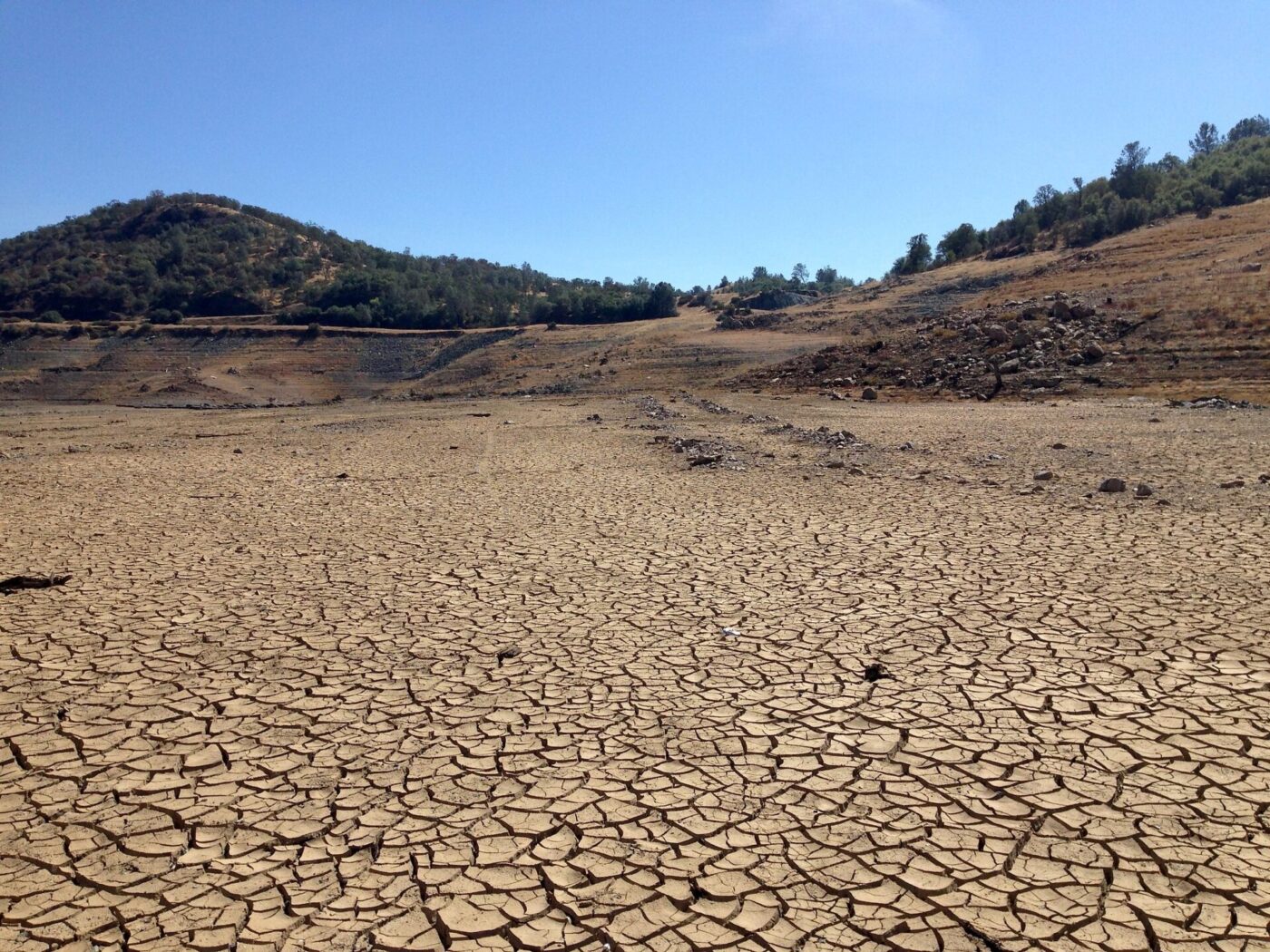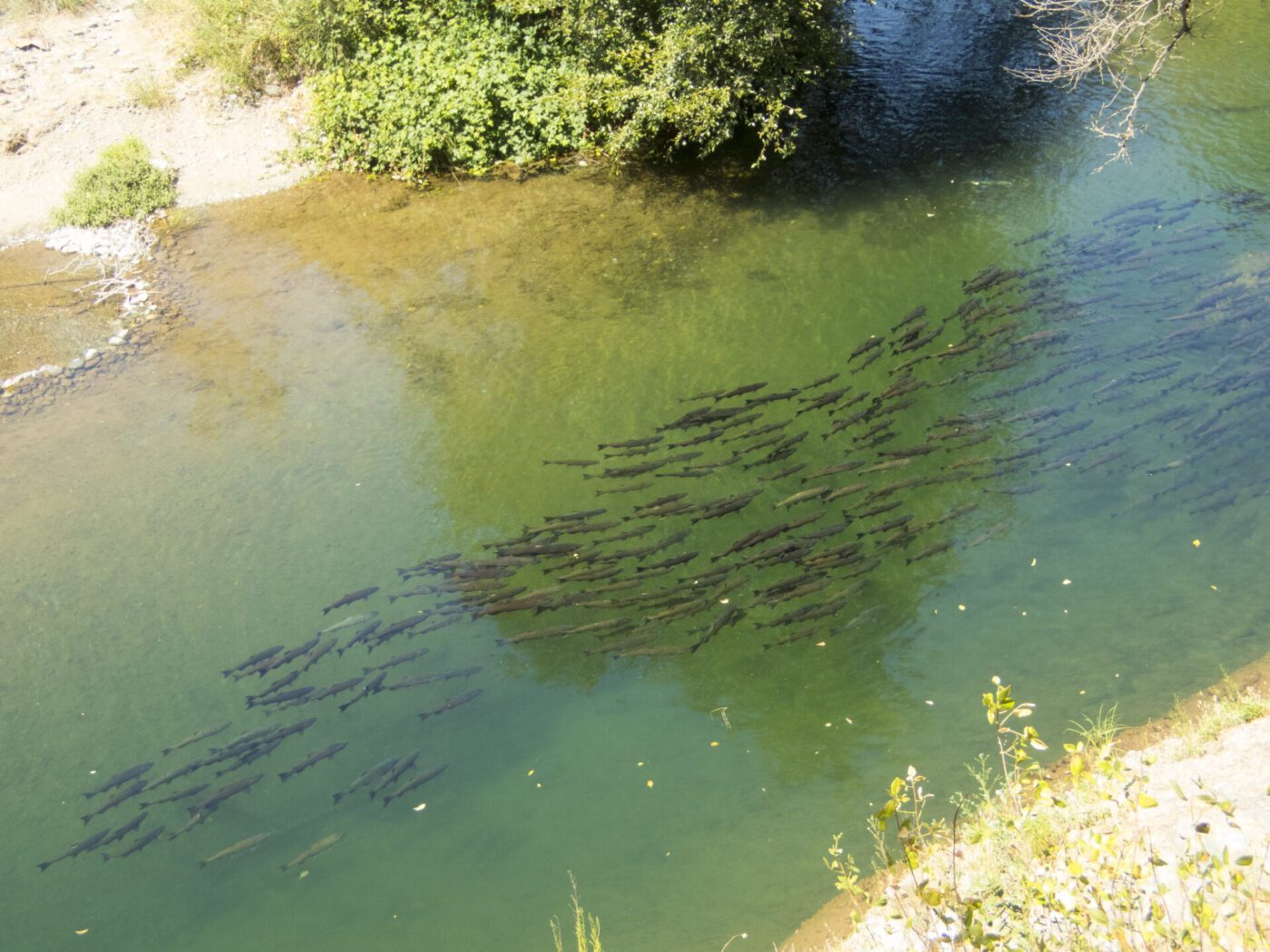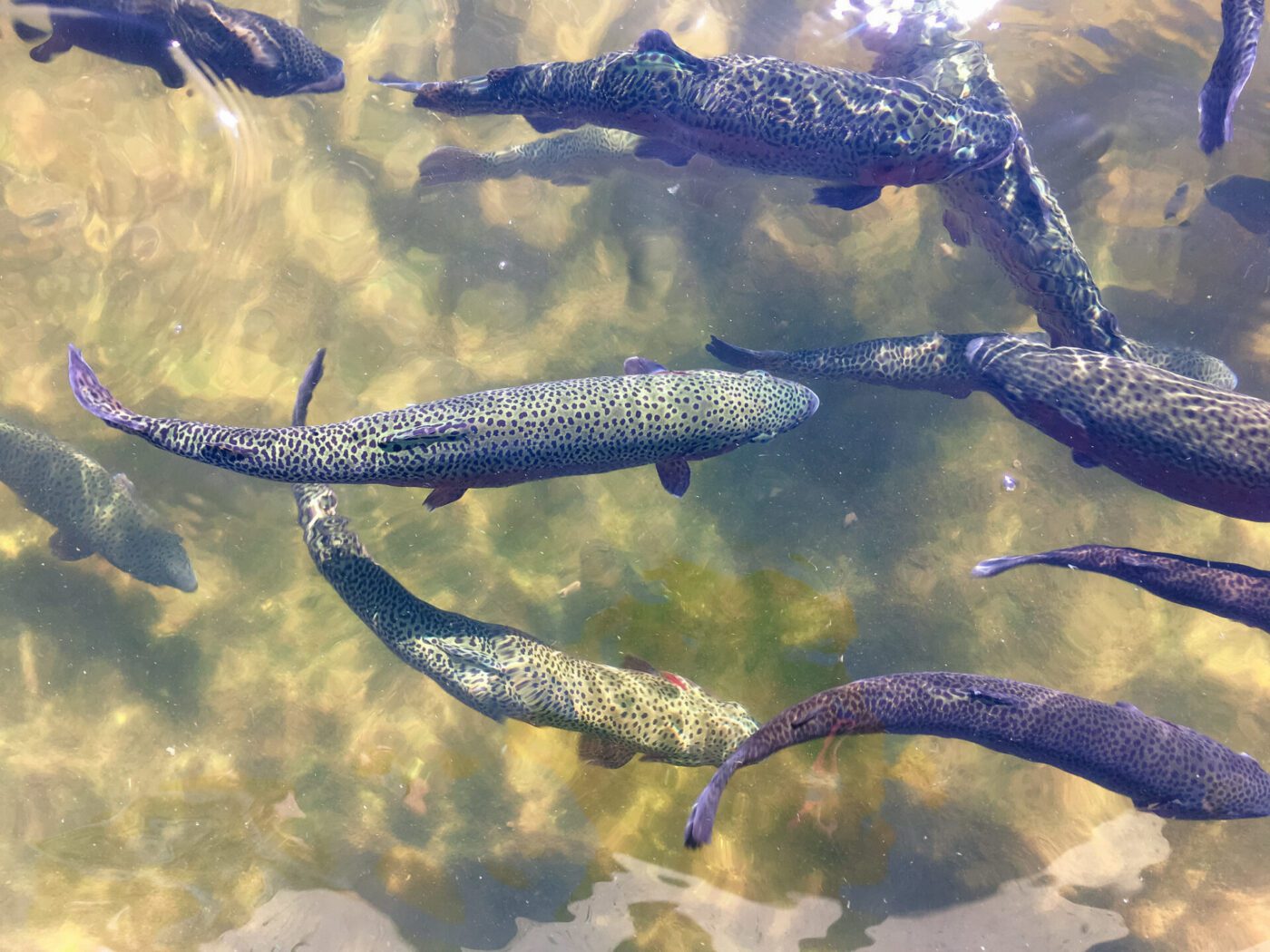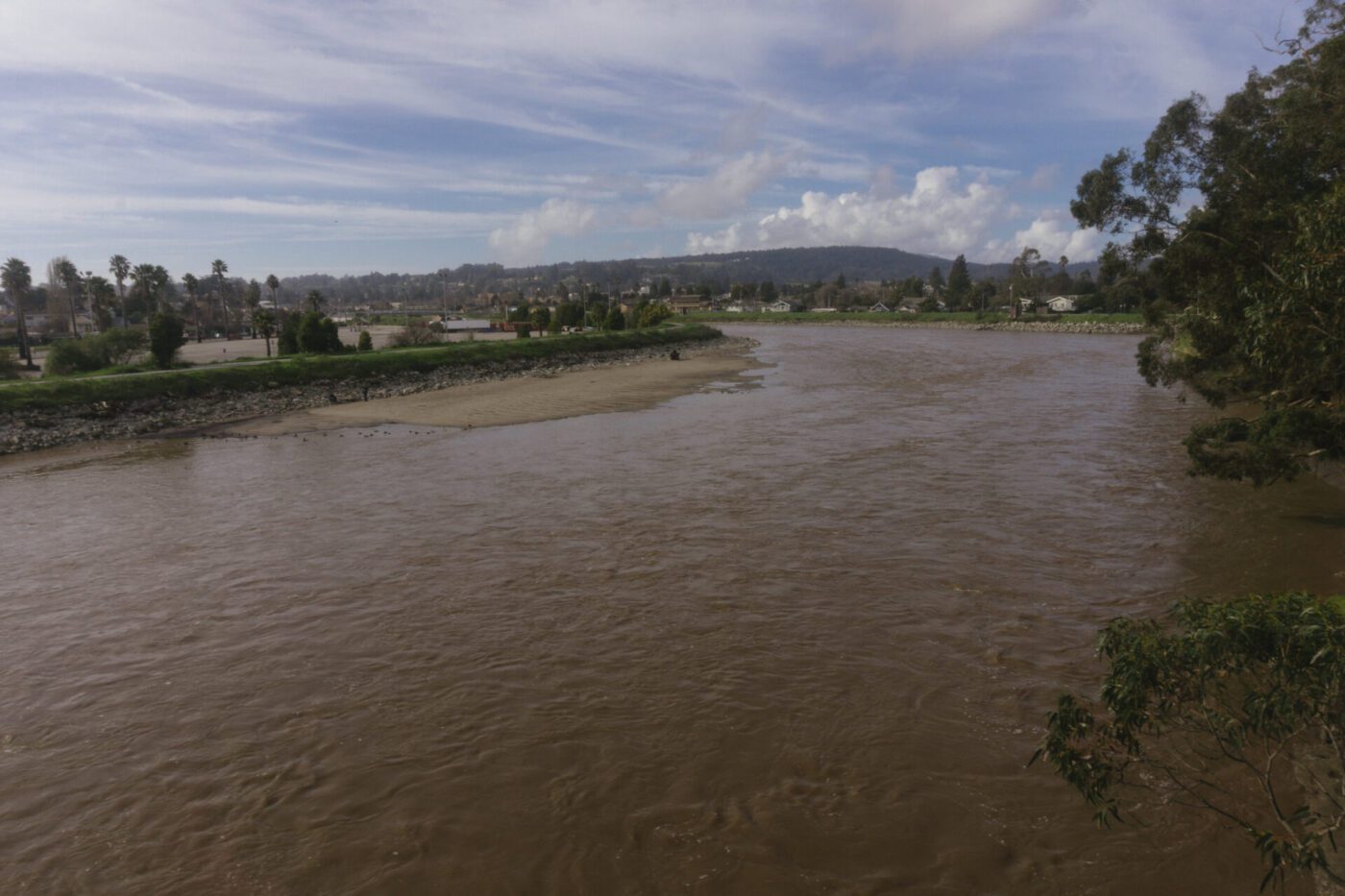Monday March 4, 2024

Change is perhaps the one constant in nature, and it is the long- and short-term changes in climate and landscape that shape ecosystems. Scientists believe that the earth is currently in a period of rapid climate change caused primarily by human activities that began in the industrial revolution. These activities, such as the burning of fossil fuels, have released greenhouse gasses into the atmosphere at a faster rate than ever before. Although humans are having a larger and far more rapid impact on our atmosphere than what has naturally occurred in the past, climatic situations similar to what we are seeing now have happened previously in the history of our planet. Therefore, looking to the past can help scientists predict the effects that elevated carbon dioxide levels, high temperatures, and weather changes may have on the environment and fisheries.

Spring-run Chinook salmon (Oncorhynchus tshawytscha) in a pool in Butte Creek.
Pacific salmon and trout (Oncorhynchus spp.) evolved between 5 and 15 million years ago during the Miocene Era. They survived the Pliocene era, which saw temperatures up to 14°C (57.2°F) warmer than they are today in the northern part of their range, and an average of 3°C warmer globally. This was also the last time that carbon dioxide in the atmosphere reached levels similar to those observed today, at 400 ppm. One species of salmon that went extinct during the drastic changes of the Pliocene Era was the six foot long, 400 pound saber-toothed salmon (Oncorhynchus rastrosus). The Pacific salmon species that still exist today have survived at least four major ice ages and drastic changes in the landscapes of western North America. Adaptation to these changes contributed to the diversity of species and subtypes that occur today, such as landlocked cutthroat trout (Oncorhynchus clarkii) and the different seasonal runs of Chinook salmon (Oncorhynchus tshawytscha). Historically, this adaptability to change is thanks to the genetic diversity present in salmon populations, which serves as the raw material that evolution morphs into unique adaptations. But in recent decades, hatcheries have lowered the genetic diversity – and thereby the adaptability – of salmon populations, which puts them at risk of extinction if these types of major environmental changes happen again.

Rainbow trout (Oncorhynchus mykiss) in a hatchery.
Other native California fishes have remarkably persisted for up to 100,000 years before present with few extinctions caused by either climate changes or humans. These include Sacramento suckers (Catostomus occidentalis), lampreys (Entosphenus tridentatus and Lampetra ayresii), green and white sturgeon (Acipenser medirostris and A. transmontanus), Sacramento splittail (Pogonichthys macrolepidotus), Sacramento perch (Archoplites interruptus), tule perch (Hysterocarpus traskii), and various species of minnows. However, this diversity which has endured so many thousands of years may be threatened by the current rate and intensity of climate change. In response to higher water temperatures, native fish shift their range to cooler areas (movement which may not be feasible in cases where dams block access to headwaters). Non-native species are also able to expand their range into more habitats if warmer temperatures allow.

A Sacramento splittail (Pogonichthys macrolepidotus), a native California fish species..
California has experienced over a decade of reprieve from the extreme droughts and floods that typically occurred prior to 1900 (Ingram and Malamud-Roam 2013), but scientists predict that these dramatic weather events will return, likely due to the effects of present-day climate change. What can be done to protect vulnerable fisheries from the threat of extinction? Many steps have already been taken to help improve salmon habitat and buffer them from environmental extremes. Most of these measures have focused on water-related adaptations in the agricultural sector, such as groundwater recharge, crop planning, and irrigation improvements. Habitat restoration in urban areas can also contribute to improved fish survival in these highly-altered landscapes. Improving fish passage to upstream habitat can provide more areas of cool refuge, and dam removals have returned valuable cool-water spawning habitats to salmon populations that have been blocked off for decades. Other measures may have to be enacted globally across society at large in order to reduce overall greenhouse gas levels and lower global temperatures.

High flows on the lower San Lorenzo River following a storm.
Some suggested measures such as personal carbon allowances and travel limitations may be necessary to achieve climate goals. However, habitat restoration and water conservation efforts will be more effective if the other threats that salmon face are also remedied. Impacts from non-native species, habitat degradation, and pollution must also be addressed in order to make a big difference for native fish populations facing extreme climate conditions.
Header Image: The dry lake bed at New Melones Reservoir in October of 2014.
This post was featured in our weekly e-newsletter, the Fish Report. You can subscribe to the Fish Report here.
